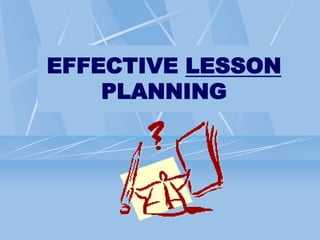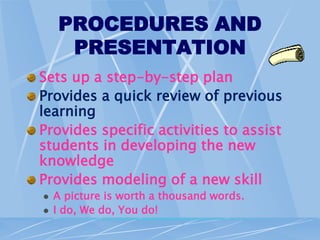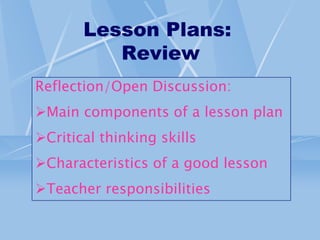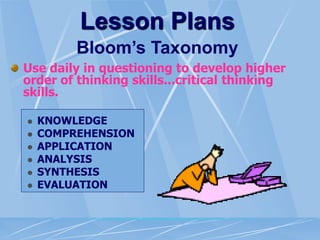The document provides guidance on effective lesson planning for teachers. It outlines that effective lesson plans include clear objectives, engaging introductions and activities, guided and independent practice opportunities, and assessments. It emphasizes that thorough planning is important for staying organized and achieving learning goals. Key components of strong lesson plans are objectives, materials, procedures, instructional strategies, and evaluations. Proper planning helps teachers maximize instructional time and keep students engaged and on task.


































